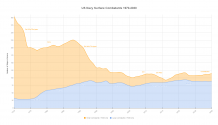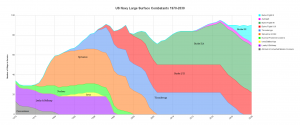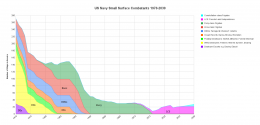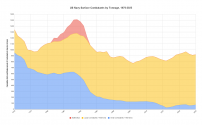You are using an out of date browser. It may not display this or other websites correctly.
You should upgrade or use an alternative browser.
You should upgrade or use an alternative browser.
US Military News, Reports, Data, etc.
- Thread starter tphuang
- Start date
Those 20 LCS won’t last until 2030, leaving the USN with ~100 aegis types in 2030. Half of which will be quite old and a third of which will de deployed elsewhere trying to hang on to hegemony.Some USN charts I prepared earlier:
View attachment 90162View attachment 90158View attachment 90159View attachment 90161
It seems to me that China can quite easily match this capability. It also seems that China should be able to monitor and destroy/make ineffective these 100 ships by 2030 as well, from quite far away, if it had too.
The USN really needs Unmanned Surface Vessels, but China is in a nice position here also.
Those 20 LCS won’t last until 2030, leaving the USN with ~100 aegis types in 2030. Half of which will be quite old and a third of which will de deployed elsewhere trying to hang on to hegemony.
It seems to me that China can quite easily match this capability. It also seems that China should be able to monitor and destroy/make ineffective these 100 ships by 2030 as well, from quite far away, if it had too.
The USN really needs Unmanned Surface Vessels, but China is in a nice position here also.
The USN doesn't need USVs per se.
They just need affordable surface ships.
Note how the Chinese Type-056 Corvette is roughly the same size as a US USV, but the US ships are far more expensive.
Nice work!Some USN charts I prepared earlier:
View attachment 90162View attachment 90158View attachment 90159View attachment 90161
A question: why are you projecting the retirement of FLII(A) Burke's at the same time as the Ticonderoga's?
Lethe
Captain
Nice work!
A question: why are you projecting the retirement of FLII(A) Burke's at the same time as the Ticonderoga's?
I think you are misreading the chart. Ticonderoga numbers beginning to drop in 2023, reaching zero by end 2028. Burke IIA numbers peak at 47 in 2025 and remain at that level through 2030. As the bottom of the chart (Ticos) progressively drops out, other types progressively "fall into" the portion of the vertical axis that Ticonderogas previously occupied. Burke Flight I numbers do begin to drop in 2028, down to 22 by end 2030.
The retirement schedule that I'm using comes from USN's April 2022 shipbuilding plan but I don't expect that it will be entirely accurate. Congress is unlikely to permit USN to retire ships on its preferred schedule. In particular, it seems unlikely that Congress will permit USN to retire nine existing Freedom-class ships next year as USN has requested.
Last edited:
Wouldn't they need a KJ-500 counterpart to accurately simulate J-20, as it often works closely with AWAC for sensor fusion according to Wilsbach?New Aggressor squadron using F35 to simulate Chinese threats. Includes not very subtle dig at PLAAF:
The closest I can think of for them is E-3?
Last edited:
Wouldn't they need a KJ-500 counterpart to accurately simulate J-20, as it often works closely with AWAC for sensor fusion according to Wilsbach?
The closest I can think of for them is E-3?
They probably need E-7.
I don't see anything in there that's controversial. You want to simulate your opponent as close to reality as possible. The same type of activities are going on inside plaaf exercises. I don't think USAF believes this makes them invincible, but it is a good way to prepare them for Chinese tactics.New Aggressor squadron using F35 to simulate Chinese threats. Includes not very subtle dig at PLAAF:
I would be curious what they know about each other's tactics and capabilities. At this point, plaaf should have a pretty good sense of f35 radar signature and how to deal with it. Shilao said they were able to even trading 4th gen aircraft with j20 aggressor fleet to hone their tactics against f35. I am sure usaf would have a pretty good idea of j20 signatures also.




